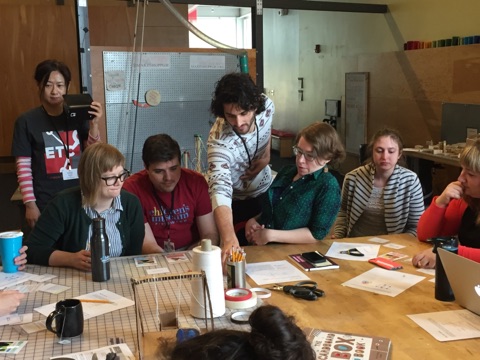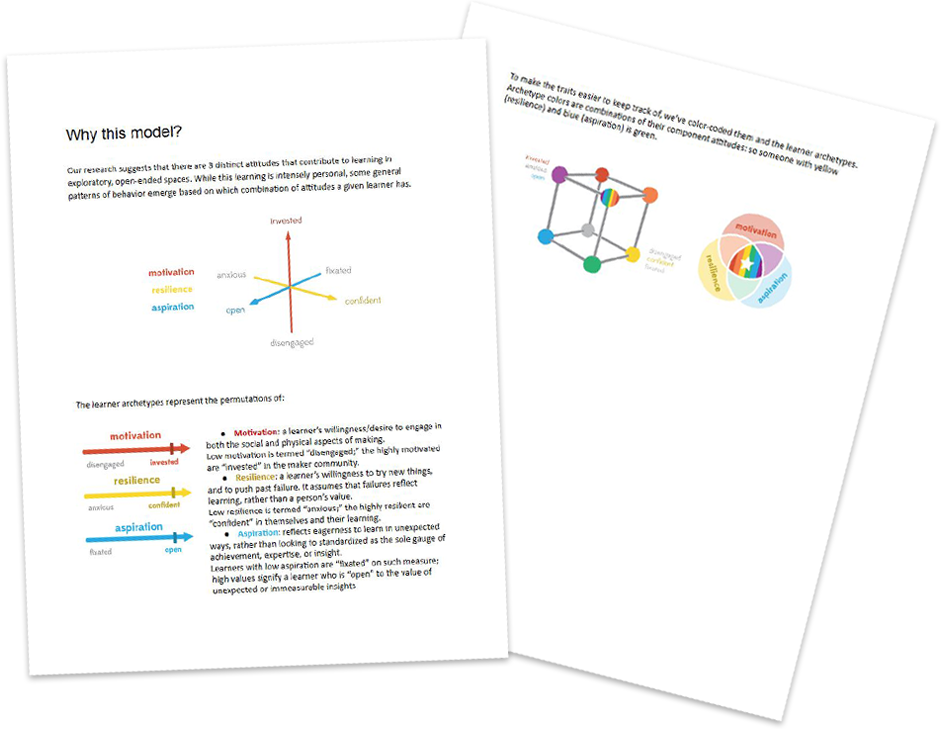 Aristeia has held its workshop! Hooray!!! As a team we were all anxious and stressed about this event as this was when we were essentially presenting our deliverable to our client and the Teaching Artists. We kept the structure simple enough that we could easily adapt it depending on the amount of time we would have. The workshop was planned for one hour and luckily we managed to use that entire time slot without interruption.
Aristeia has held its workshop! Hooray!!! As a team we were all anxious and stressed about this event as this was when we were essentially presenting our deliverable to our client and the Teaching Artists. We kept the structure simple enough that we could easily adapt it depending on the amount of time we would have. The workshop was planned for one hour and luckily we managed to use that entire time slot without interruption.
Tony was selected as the workshop facilitator while the rest of us past out materials, took photos, shot video, and provided extra facilitation should the need arise. He started the Teaching Artists off by having them look over a brief handout about the Learner Archetype Mode and led them through an overview of our model. The Teaching Artists were very receptive to this and seemed to agree with our conclusions and observations. This helped us relax because while they were involved heavily in the overall card design, they hadn’t had the same amount of exposure to the model. If they could understand the model then we were confident that the cards would also make sense.
 Tony then briefly walked them through each card deck section and their structure. This was a brief section as the Teaching Artists were already very familiar with them. They were happy that we had taken their suggestions notes on problems we were having with the deck into consideration for the design.
Tony then briefly walked them through each card deck section and their structure. This was a brief section as the Teaching Artists were already very familiar with them. They were happy that we had taken their suggestions notes on problems we were having with the deck into consideration for the design.
The rest of the 45 minutes was spent in exercise mode where we split the Teaching Artists into groups of two, gave each an Observational Behavior card, a Learner Node card, and three Inspiration cards. These were all assigned at random. Tony then led them through exercises on how to think about and design possible facilitation strategies to get their “learner” more comfortable in the space and engage in family unit learning.
This opened up discussion between the Teaching Artists that led to good insights on how to approach older audiences (besides children). We had one team create a plan complete with “steps” of how to lead the “Silent Observer” to become more confident. Another team talked about how it was all in how you approached the learner.
From what we observed, our model and card deck system did actually help create a common language, and led to insightful discussions, debates, and transfer of information. Our client was very happy by the end and told as afterward that had they wanted to, the Teaching Artists could have continued their discussions for another three hours. That’s something! As an extra plus for us, one of our advisors, Shirley Saldamarco, and another ETC faculty member, Mike Christel, attended as observers. Shirley was pleased with our progress and client’s happiness while Mike, who had some concerns about our design choices, was able to fully understand the path we chose to take and our product’s usefulness. All that’s left is to convey the same thing to the rest of the faculty at finals next week.





